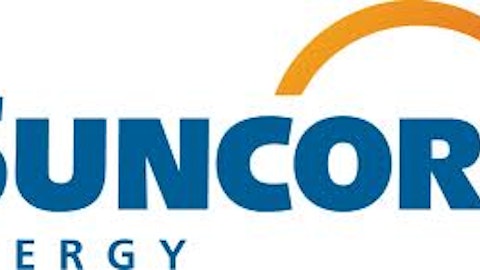
I recently wrote about six influences that affect dividend growth (Earnings Growth, Payout Ratio, Cash Flow, Past Dividend Growth Rates, Recent Dividend Increases, and Company Dividend Policy). Today, I’m going to use TELUS Corporation (USA) (NYSE:TU) and Caterpillar Inc. (NYSE:CAT) as examples of how you can use these different influences to estimate future dividend growth.
Companies with a public dividend policy
In some rare instances, a company will make estimating dividend growth easy by announcing its dividend policy. A good example would be TELUS Corporation (USA) (NYSE:TU), which recently announced that it will target a payout ratio of 65% to 75% and annual dividend growth of 10% for the next three years. They plan on increasing the dividend twice a year with the average annual increase coming in around 10%.
TELUS Corporation (USA) (NYSE:TU) made a similar announcement three years ago when they announced they would be targeting 10% annual dividend growth. TELUS Corporation (USA) (NYSE:TU) has been providing clear guidance on its dividend growth for a while now, but this is not a common occurrence. Most of the time it is not this easy, but you can still make an educated guess with a little extra work.
Companies without a public dividend policy
When a company has not made its dividend policy public, I use earnings estimates and past payout ratios to calculate an estimated annual dividend growth rate range. Once I have the range, I look at the most recent dividend increase and past dividend growth rates to see if I think dividend growth will be at the upper or lower limits of this range. I’ll use some information from my recent dividend stock analysis of Caterpillar as an example.
Caterpillar Inc. (NYSE:CAT) doesn’t have a public target dividend growth rate or payout ratio. Because their dividend policy isn’t public, I looked at past payout ratios to see if I could determine their target payout ratio.

It looks like Caterpillar Inc. (NYSE:CAT) has been targeting a payout ratio of 20%-30%, but because of the troubling times in 2009, it spiked above 100%. Because of this spike, the five-year and 10-year payout ratio averages look inflated, so I prefer 20%-30% as a reasonable range.
Now that I have a target payout ratio, I can use earnings per share (EPS) and the estimated earnings growth to come up with a dividend growth range. You can get an idea of how this is done in the table below. For specific steps, see the explanations below the table.

Right now, analysts are estimating annual growth of 14%.
2. Get the EPS and estimate EPS in five years
In Caterpillar Inc. (NYSE:CAT)’s case, I used the most recent fiscal end EPS of $8.48. Using the 14% annual growth rate results in an estimated EPS in five years of $14.32.
3. Use the payout ratio range to calculate dividends in five years
Use the payout ratio range of 20% to 30% and multiply it by the estimated EPS in five years of $14.32. This will give you the estimated dividend ranging from $2.86 to $4.30.
4. Compare dividends in five years to the current dividend to determine the dividend growth rate
In this example, I used EPS for the fiscal end in December 2012, so I want to use the dividend paid out in the same period, which was $1.96. Now I can compare the dividend range of $2.86 to $4.30 to the current dividend of $1.96 to get average annual growth rates of 7.9% to 17%.
To calculate an average annual growth rate use the following formula:
(Dividends in 5 years/Current Divided)^(1/Number of Years)-1
To give you an example I’ll show you how I calculated the average annual dividend growth rate of 7.9%.
(2.86/1.96)^(1/5)-1 = 0.07850 ~ 7.9%
Fine tune your dividend growth estimate with past growth rates
By now, you should have an understanding of how I calculated Caterpillar Inc. (NYSE:CAT)’s annual dividend growth estimate of 7.9% to 17%. This is a pretty big range, however, so I like to look at past dividend growth to try and come up with a better estimate. The most recent dividend increase was 15.4%, which is quite a bit higher than past averages.

Large increases are an indication from management that they expect good things in the future. Management doesn’t like to increase dividends beyond sustainable levels, because dividend cuts are viewed very negatively by shareholders. In Caterpillar Inc. (NYSE:CAT)’s case, the recent large increase is a good signal from management that they like the prospects of the company. With this in mind, I can now guess that dividend growth will be at the higher end of the 7.9% to 17% range, say around 15% annually.
Potential difficulties
When you don’t have a public dividend policy, the first step is usually trying to figure out the company’s target payout ratio by looking at its history. In some cases, the company may have recently changed its dividend policy, so historic payout ratio averages aren’t useful anymore. I’ll use Suncor Energy Inc. (USA) (NYSE:SU) as an example.
From 2003 to 2012, Suncor Energy Inc. (USA) (NYSE:SU)’s payout ratio was generally between 5% and 30%. From 2009 to 2012, it was generally around 20% to 30%. You might think that a reasonable estimate going forward would be 20%-30%, but with Suncor Energy Inc. (USA) (NYSE:SU)’s recent large dividend increase of 54%, it becomes harder to guess.
Over the past 10 years, dividend increases were generally around 20% annually, so 54% is unusually large. This could be a sign from management that they are planning on paying out a larger portion of their earnings as dividends. In these types of situations, it is harder to estimate future dividend growth because of the changing dividend policy.
Bottom line
Estimating five years out is difficult and analysts are thought to be right about 50% of the time, so it is important to take these estimates with a grain of salt. While no one can predict the future, I still like to try and guess the dividend growth, because it forces me to see if dividend growth is sustainable. While the process may not be perfect, it makes identifying good dividend growth candidates a lot easier.
The article How to Estimate Future Dividend Growth originally appeared on Fool.com and is written by Michael Weber.
Michael Weber owns shares of Suncor Energy (USA) and TELUS (USA). The Motley Fool has no position in any of the stocks mentioned. Michael is a member of The Motley Fool Blog Network — entries represent the personal opinion of the blogger and are not formally edited.
Copyright © 1995 – 2013 The Motley Fool, LLC. All rights reserved. The Motley Fool has a disclosure policy.





